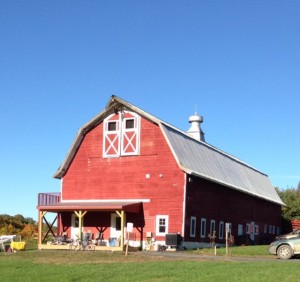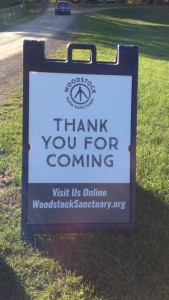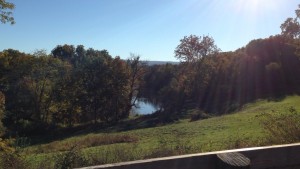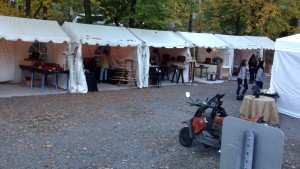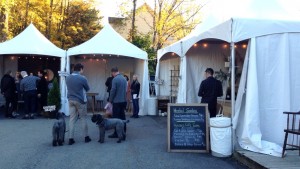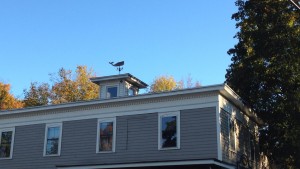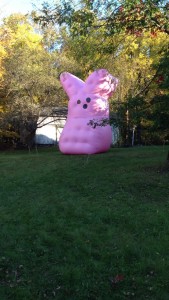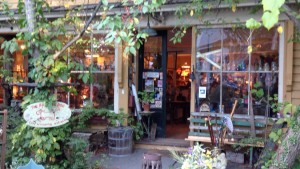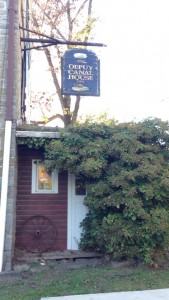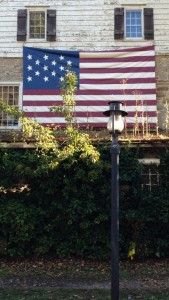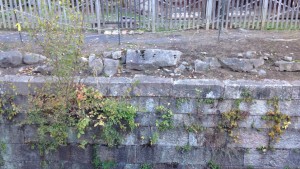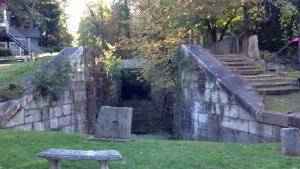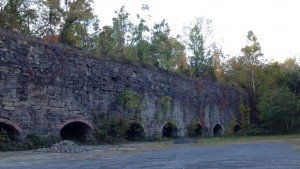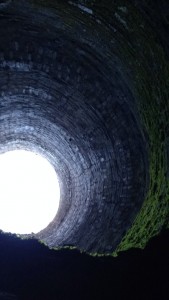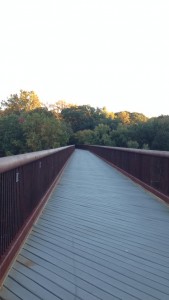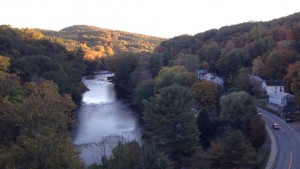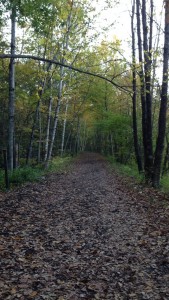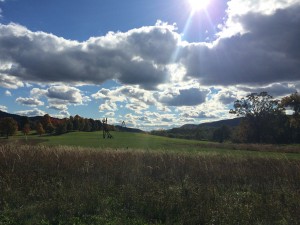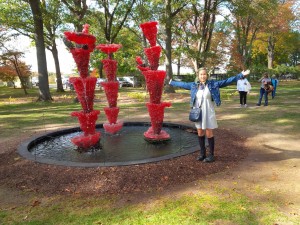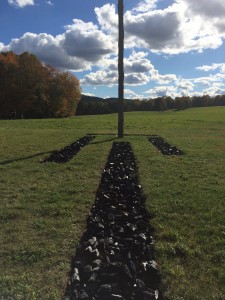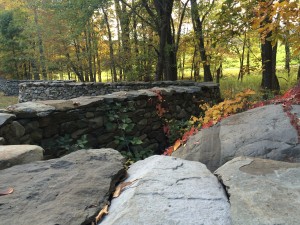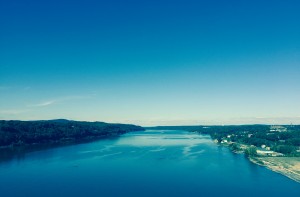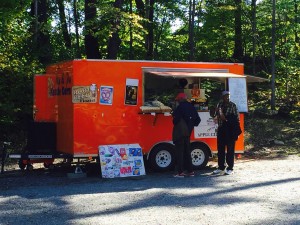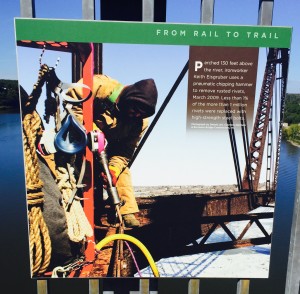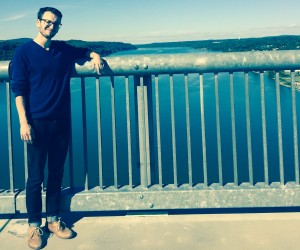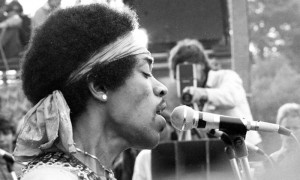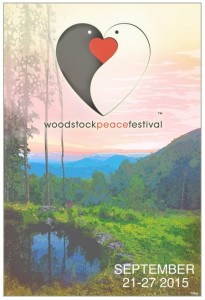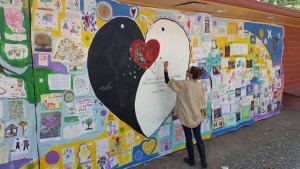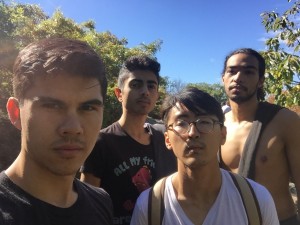
Daniel Gutowski and house mates
For my independent trip, I visited Bull Hill, and Cold Spring, N.Y with all of my house-mates. Bull Hill is less than a mile from the more famous Breakneck Ridge. Unlike Breakneck which is a shorter, more intense scramble (it’s not named Breakneck for nothing), Bull Hill offers a steady, steep incline and a long, relaxing trip back down.
At the beginning of the trip, we saw a sign that advertised a GPS hiking app. While all four of us had cell phones at hand, we opted for the paper map, although we were impressed that such technology exists. The trail is fairly easy to follow, but don’t go without a map. Multiple trails intertwine, and getting back home isn’t as easy as getting up.
The first rest stop along the hike is an abandoned quarry. The backdrop of the quarry is a tall sheet of rock that remains what looks like an unfinished project. Down below, small trees grow among the grass, and when walking through, it feels like you are on a safari. The trail invites you into the grassy area. After spending some time checking it out, we were back on the trail which whips up and around the flatland. Next thing you know, you are on top of that sheet of rock looking down.
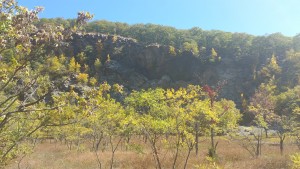
Bull Hill Abandoned Quarry
Stop number two. After the quarry, there is a lookout spot that offers a sweeping view of Cold Spring, West Point, and the Hudson River. For the less physically fit, this spot would be the perfect place to stop and turn around. The view was spectacular, and there were many other hikers taking pictures. After here, we didn’t see any people coming back down the mountain. Bull Hill is an intense incline not for the faint of heart, but once you get to the top it’s much easier to come down the other side. Instead of blowing out your knees by coming back on the steep side, the backside offers a long cool walk in the shade with fewer attractions but more tranquility.
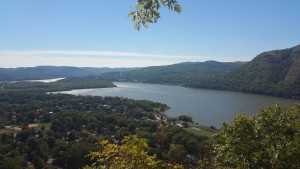
Bull Hill Panorama View
Next stop: lookout number two. The mountain trail travels along the edge so at any point you can venture off to the precipice to see how high up you are. From time to time the trail flirts toward the cliff edge so even if you prefer sticking to the path, you can’t avoid coming up to the cliff and viewing the beautiful landscape. We went on a day that the sky was particularly clear so we were able to see the New York City skyline at this point. At nighttime, you can see the light pollution radiating from the City.
The way back down was a sweet reward for the strenuous hike up. The cool breeze wicked the sweat off of our backs, and the shade provided us with a nice peaceful sanctuary. While the return down was much longer, it took about the same time because we could zip right through the easy terrain. We passed by a hollow tree that my house-mate Andrew climbed up and into. Don’t do this at home. Hollow trees are known to have nasty things in them like beehives or worse, so proceed at your own risk.
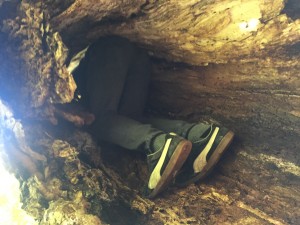
Andrew climbing into a tree
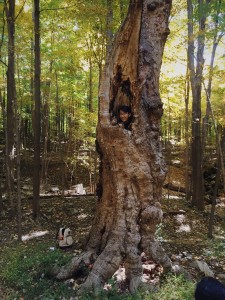
Andrew inside of a tree
Lastly the trail takes you to the Cornish estate ruins. These ruins are absolutely spectacular. You can climb up on to the tops of the rock walls, and the whole place seems like a set on American Ninja Warrior. We all tried our hand at amateur parkour, scaling the rock walls. The Cornish estate burned down in the 50s, and they are now a part of the trails. This point of the trail was by far the most congested. We went on a Saturday so many out-of-towners were here checking out the ruins. The remains of the house, garage, and stone pool make up the Cornish estate.
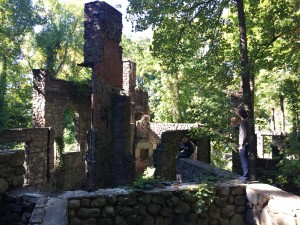
Cornish Ruins
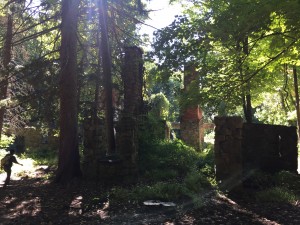
Cornish ruins
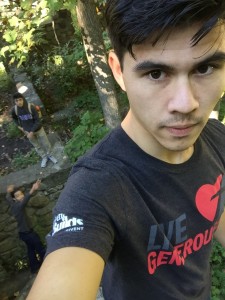
On top of the Cornish Ruins
Lastly, we wrapped our day up with a stroll through downtown Cold Spring and a late lunch at Hudson Hill Café. Cold Spring is an awesome village. Much like Hudson, N.Y., Cold Spring has an incredible art and music scene, restaurants, design studios, bars, and antique shops. Main Street, where all the shops are located, starts at the Hudson River with a beautiful view of Storm King directly across. The train from New York stops right at the end of Main Street, which is perfect for city folk to hop off the train and stroll up and down the street. While the shops clearly cater to high end customers, Cold Spring seems not at all pretentious. People of all different colors and creeds are seen walking up and down the street which adds to the inclusive feel. One could easily window shop without spending a dime and have a great time.
Hudson Hill Café was the perfect cherry-on-top to our adventure. Hudson Hill has only been around since 2011, but they consistently fill up the whole restaurant. They refuse reservations, and only accept customers on a first-come first-serve basis. Whether you heard of Hudson Hill or not, you’re waiting in line just like everyone else. We had a wait time of an hour, but that allowed us to stroll around more before chowing down. Absence makes the heart grown fonder and waiting makes the appetite bigger! The restaurant décor is that of an old New England farmhouse: wooden floors, light pastel colors, and sunlight that radiates throughout the interior. On Hudson Hill’s Café’s webpage they profess that they feature “only the freshest ingredients from New York organic farms.” They don’t push the farm-to-table mantra really hard, but the food speaks for itself. I got a bratwurst with sauerkraut, perogies, and sauteed red cabbage. They say if a restaurant serves something simple and does it right that’s when you know it’s good. Let me tell you that the food served was not at all complex or wildly creative, but what they have they got right. Fresh ingredients and attention to detail are really all you ever need. I highly recommend going.
Cold Spring is an awesome town that I can’t recommend enough. The word quaint gets thrown around a lot especially with small towns that exist along the Hudson, but to me, nothing comes closer than Cold Spring in embodying that term. The old architecture, the beautiful view of the Hudson River, the music, the thrift shops, antique shops, design studios, restaurants, bars, and everything else just comes together so seamlessly, beckoning newcomers to venture in and try it all out. This Halloween, Cold Spring will be having their annual Halloween parade. Come with your best costume and expect to be showed up. Only the most creative and most daring will be in attendance for the parade. It’s something that you won’t want to miss.
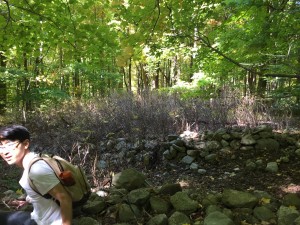
Bull Hill (Trip down)
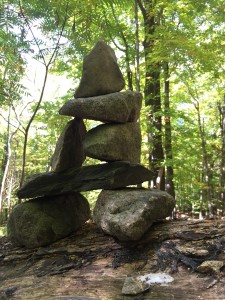
Rock Cairn











